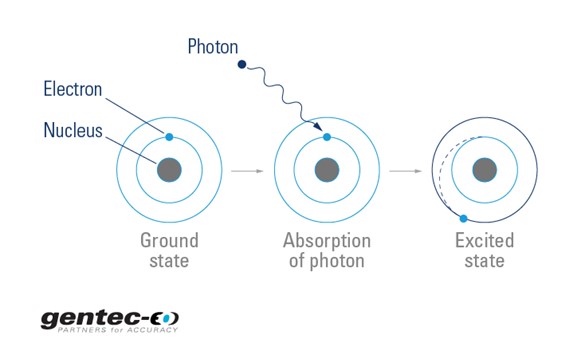What is stimulated emission in lasers?
Monday, November 28, 2022
Monday, November 28, 2022
Until the invention of MASER in 1953 (which was based on stimulated emission from Einstein), human interactions with light mostly revolved around our ability to see. But then, with the emergence of stimulated emission technologies, our grasp on what’s possible to do with light changed drastically.
Wanting to know what stimulated emissions is in lasers, in fact, really sums up as saying: what is a laser? Mainly because it touches the fundamentals at the core of that technology. Nowadays, laser is a term somewhat standard and used as a common noun, but you might know laser is an acronym that stands for Light Amplification by Stimulated Emission of Radiations.
To understand what stimulated emission is in lasers, you have first to understand some basics about interactions regarding light and atoms.
Basically, and as an oversimplification, quantum mechanics states that nucleus-bound electrons aren’t allowed to have random energy levels. These levels are discrete and specific to the atom they are a part of. Most of the time, electrons can be found in the ground state, which refer to the lowest energy level available.
Let’s consider only hydrogenic atoms here (atoms with only one electron). So, when a photon comes across an electron in the ground state, if its energy is equal to precisely the difference between the energy of the ground state and the energy of an excited state, the photon will be absorbed by the electron and the electron will jump to that specific excited level.


Then, over time, it will naturally go back spontaneously to its ground state. By doing so, it will emit another photon which has precisely the same energy of the original one. This corresponds to the energy difference between the two states. This means same frequency/wavelength. This is what we call spontaneous emission. So, to sum up, if you throw a photon with the appropriate wavelength at a ground state electron, it will absorb it, jump to an excited state for a short amount of time, and then go back to its ground state while reemitting a photon of the same wavelength.
Ensure you purchase the most optimal solution for your measurement needs with this checklist. Download it now, it's helpful and free!Buyer's checklist for laser power & energy meters
Well, that’s precisely where stimulated emission comes into play. So, let’s take the previous example where a photon of the appropriate wavelength crosses the path of a bounded electron, but this time the electron is on a higher energy level. During the brief moment (around 100 ns) it is excited, the presence of this photon will stimulate the return of the electron to its ground state (or a lower state available, depending on its energy and the photon wavelength), releasing another photon in the process.
Then, you will have two photons of the same wavelength (the incident one and the freshly emitted one). But the incident photon did not only stimulate the electron to return to its ground state (or a lower state), the resulting photon is coherent with the first one, so perfectly in phase and in the same direction. You then have two identical photons moving together.
Now, let’s take these two photons and make them bounce back and forth between two parallels mirrors. And then, let’s say we fill up that space between these mirrors with atoms for which electrons are in an excited state (gain medium). Over time, the end result will be a big bunch of identical coherent photons.
Of course, there will be a combination of absorption and emission in the medium. Therefore, to make this into a viable laser (gain of photon), your gain medium would have to be in a population inversion, meaning that it will contain more electrons in an excited state than in the ground state. This population inversion is usually reached through optical or electrical pumping.
Obviously, you understand that the reality of it is way more complex than what have been discussed here in a few lines and it doesn’t work exactly as described, but it remains a pretty accurate generalization of how stimulated emission works in lasers. For more information about lasers, photonics and optical technologies, make sur to subscribe to our blog to get monthly news!